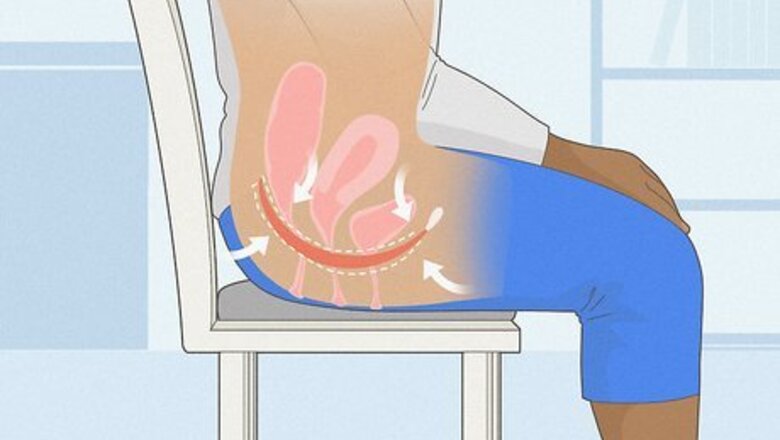
views
X
Research source
Both men and women benefit from these simple exercises, and you can do them anywhere, anytime.[2]
X
Trustworthy Source
PubMed Central
Journal archive from the U.S. National Institutes of Health
Go to source
We’ll show you how to perform simple reverse kegel stretches, how to get relaxed for the most effective exercises, and fill you in on the various benefits that reverse kegels provide.
- Identify and familiarize yourself with your pelvic muscles by tensing the same muscles you use to hold in urine when you need to use the restroom.
- Lie on your back with your knees bent and spread wider than your torso. Tense your pelvic muscles for 2 seconds, then relax them for 10 seconds.
- Breathe continuously and deeply as you repeatedly tighten and loosen your pelvic muscles. Repeat this exercise 10 times, and perform 3 sets per day.
Doing Reverse Kegels
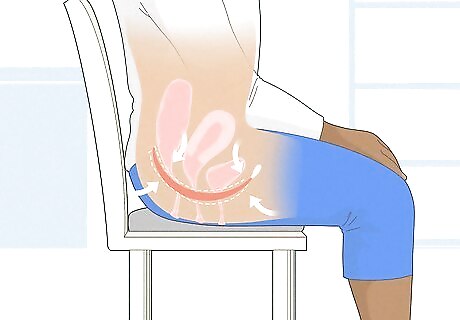
Tense your pelvic floor muscles to identify them. Imagine you are trying to stop yourself from urinating, the muscles you use to do so are your pelvic floor muscles. Perform a normal kegel by tightening your pelvic floor muscles just enough to identify them. Give them a slight squeeze and hold it for 2 seconds. As you hold, notice where the muscles are located and how it feels to squeeze them. Repeat this exercise until you can contract your pelvic floor muscles easily and without too much thought. At first, it may feel odd if you have never done kegels before, but it becomes more natural with practice.

Relax your pelvic floor muscles to allow your pelvic floor to drop. Lie on your back with your feet together and your knees out. This is known as an “adductor stretch,” and helps target your pelvic floor. Focus on those pelvic floor muscles, tense them for 5 seconds, then release them and exhale as you do so. This will help your pelvic floor drop. You should feel a sensation like your pelvic floor is moving downwards. Let it go completely. As you breathe, allow your breath to fill your entire chest and belly, and feel them deflate as you breathe out. This is known as “diaphragmatic breathing” and helps to relax the pelvic floor. Relax your pelvic floor muscles for as long as you are able. While relaxed, count to 5 if this is your first time, and work up to relaxing them for 10 or even 15 seconds.
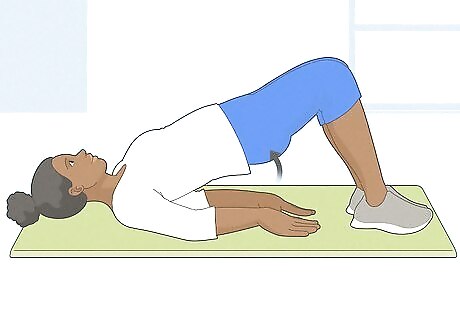
Lift your hips up to improve the stretch if you are lying down. To intensify the stretch that you get from a reverse kegel, do them while you’re lying down and lift your hips up as you breathe in and release. This allows the pelvic floor muscles to lengthen even more and deepens the stretch. Aim to keep your torso in a straight line—don’t tilt or contort your hips, but simply raise them off the ground. Remember that dropping your pelvic floor is the same action you use when you urinate or defecate, so relaxing these muscles should feel somewhat relieving.
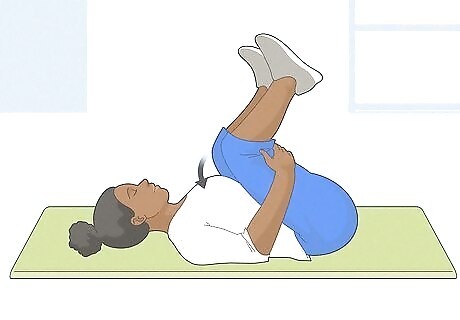
Drop your hips and grab your knees for a more involved stretch. Another valuable position for relaxing your pelvic floor is the “happy baby” pose. To do this, lie on your back and grab the back of your knees, bringing them to your chest and spreading them a bit wider than your torso. Let your legs and feet relax, and practice your diaphragmatic breathing and pelvic relaxing. Tense your pelvic floor for 2 seconds while inhaling, then relax while exhaling. Place a pillow or a cushion under your pelvis if it would help to make you more comfortable and relaxed.
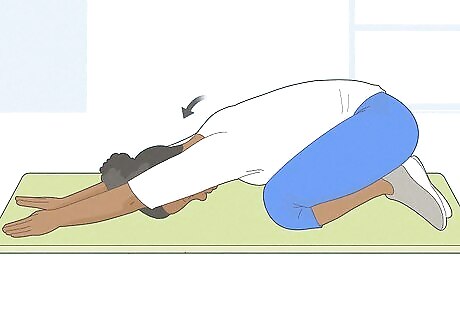
Kneel with your nose to the floor for an alternate stretch. Kneel with your knees spread wider than your hips, then lean forward and place your nose to the floor, with your arms outstretched past your head. Tense your pelvic floor muscles for a moment, then release them and exhale for 10 seconds to complete the reverse kegel. This is known as the “child’s pose,” and gives you an alternate position to target your pelvic floor, if the others aren’t working for you. Practice your deep breathing and pelvic contracting as in the other poses, but take special care to keep your body relaxed and loose.
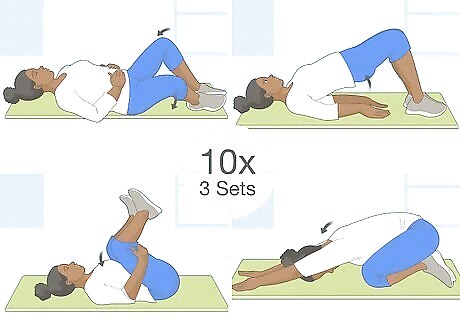
Repeat the exercise 10 times and do 3 sets daily. To get the most benefit from reverse kegels, it is helpful to practice them daily. Aim for 3 sets of 10 repetitions of your pelvic floor stretch of choice, and add more reps and sets as your pelvic floor muscles get stronger. Once you’ve learned to target your pelvic floor, avoid tensing it during the exercises, and focus instead on just relaxing it. Expect positive results within a few months, but in as little as 3 weeks. If your pelvic problems (discomfort during sex, incontinence, or chronic pelvic pain) aren’t relieved after 3 months of regular exercises, or become distracting, consult a doctor about your condition. If you’re having trouble performing the exercises, start with just a few reps, or adjust your position to whatever’s comfortable, then gradually work up from there.
Staying Relaxed and Comfortable
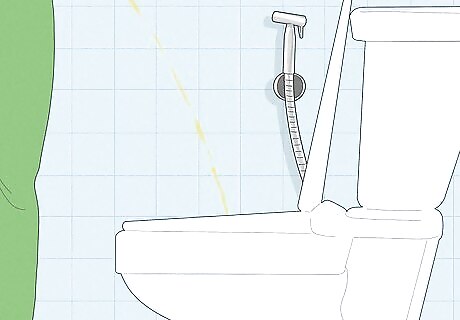
Go to the bathroom before attempting a reverse kegel. Your pelvic floor is partially responsible for processes like urination or defecation. Doing reverse kegels may cause you to unexpectedly urinate or have a bowel movement, since they involve the same muscles that you use when you go to the bathroom. To avoid having an accident, make sure that your bladder and bowels are empty first.
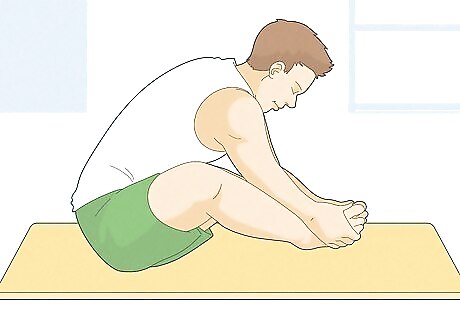
Sit or lie down in a comfortable position that works for you. While certain stretches are optimal for performing reverse kegels, you can do them in any position that feels comfortable to you. Sit in a chair, on the floor, or propped up on pillows. Alternatively, lie on your back with your legs flat on the floor, with your knees bent and your feet flat on the floor, or with your legs resting on a sofa or chair. Keep in mind that you can do reverse kegels anywhere. No one will be able to tell that you are doing them, so feel free to do them while waiting for the bus, during a business lunch, or even in the waiting room at the dentist.
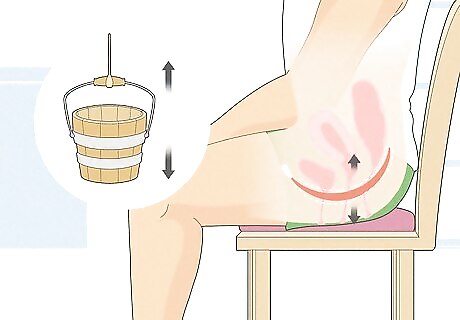
Visualize your pelvic floor as a bucket or an elevator. Visualization is an effective way to relax, get comfortable, and target your pelvic floor muscles. While performing reverse kegels, tense your pelvic floor muscles and pretend they’re a bucket full of water being drawn up from a well. Then, release the bucket and let it descend into the well again as you relax your pelvic floor muscles. Or, visualize your pelvic floor as an elevator going up as you tense, and going down as you exhale and relax.
Benefits of Reverse Kegels
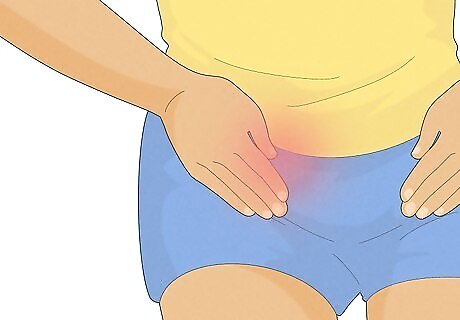
Do reverse kegels to alleviate pain in the pelvis. Pelvis pain may manifest in your hips, tailbone, lower back, genitals, or the area between the rectum and the genitals. This may have a number of causes, including injury, surgery, pregnancy, strain while using the restroom, or even just advanced age. Pelvic floor relaxation may help to loosen your pelvis and alleviate these pains in the process. If you have any acute or chronic pains in your pelvis, it’s best to consult a physician to seek a professional diagnosis.
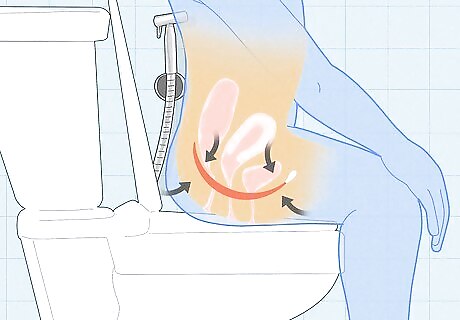
Practice pelvic relaxation to alleviate urine leakage or constipation. Normal kegels help to tighten the urinary canal and prevent leakage, but a too-tight pelvic floor can also cause urinary leakage or constipation. Relaxing your pelvic floor with reverse kegels can help loosen that pelvic floor, allowing for more control of your bladder function.
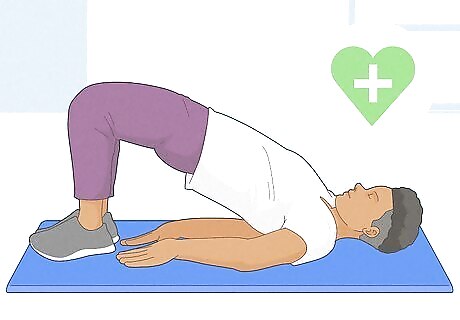
Do reverse kegels to alleviate pain during sex or erectile dysfunction. A tensed pelvic floor may cause pain or discomfort during sex for women. In men, pelvic floor dysfunction can lead to erectile dysfunction. Performing reverse kegels may relax the pelvic floor and alleviate these problems, if done regularly.

















Comments
0 comment